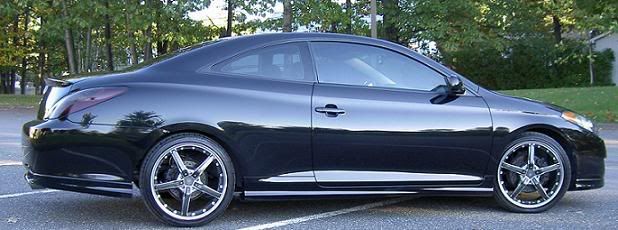Dawgz wrote:less heat back into ur intake!
Yep the purpose of the EGR valve is to recirculate exhaust air but what happen in cold weather in NJ (not talking of your Cali...Milt !!

). Does the EGR valve is just for a economic and environmental purpose ?? I know, controlling by the ECU the EGR valve redirect hot exhausted gas in the chamber to maintain a minimal temp to minimize the explosion heat and ping.
Hey just got something from a wiki that back my thoughts
---------------------------------------------------------------------------------
The design challenge The EGR system of today must precisely control the flow of recirculated exhaust. Too much flow will retard engine performance and cause a hesitation on acceleration. Too little flow will increase NOx and cause engine ping. A well-designed system will actually increase engine performance and economy. Why? As the combustion chamber temperature is reduced, engine detonation potential is also reduced. This factor enabled the software engineers to write a more aggressive timing advance curve into the spark timing program. If the EGR valve is not flowing, onboard diagnostics (OBD) systems will set a code and the power control module (PCM) will use a backup timing curve that has less advance to prevent engine ping. Less timing advance means less performance and economy. Do your customer a favor and fix those EGR codes that you may have previously deemed as unimportant.
---------------------------------------------------------------------------------
When fuel and oxygen are mixed, they burn to expand and produce heat. Too much oxygen and the amount of heat goes way up, burning valves and pistons. Bu allowing a controlled amount of burned gasses to recycle back into the engine, the temperature can be controlled and preserve valves and pistons while burning a minimum amount of fuel.
EGR stands for Exhaust Gas Recycling. If you EGR valve is not functioning properly it can result in poor performance, diminished fuel economy and potential harm to the engine.
----------------------------------------------------------------------------------
EGR Theory. EGR serves one purpose and one purpose only. That purpose is to reduce Oxides of Nitrogen (NOx). Undernormal combustion, Nitrogen(N2)Oxygen (O2) in the air and Hydrocarbons (HC) in the fuel combind into water(H2O) Carbon dioxide (CO2) and the Nitrogen remains unchanged. Under very hot combustion temperatures, the Nitrogen reacts with the other two byproducts and forms Nitrogen oxide (NO). After being released into the atmosphere, it picks up another Oxygen and becomes Nitrogen dioxide (NO2). In the presence of sunlight,
it combines with other compounds like Hydrocarbons and forms Smog. Since exhaust gas is inert (very stable) it doesn't burn again. So by being introduced into the combustion chamber, it will lower combustion chamber temps enough so that the Nitrogen doesn't react with the other compounds and is passed unchanged out the tailpipe thus not contributing to smog. Now, since exhaust gas doesn't burn, it doesn't exactly help with combustion. At higher RPM's, this really isn't noticable, but at idle, the reintroduction of exhaust gas will cause a very rough idle and can cause stalling if to much is introduced into the combustion chamber
---------------------------------------------------------------------------------
Bottom line I think if you don't get any CEL by installing a resistor or something it probably work "normally" regarding the performance curve but I think you would have big high temp issue especially boosted ?? Examining this and I don't see how you can solve the high temp problem...a intercooler would just make more fresh air to heat up but in the other hand the intercooler purpose is to cool down intake air when compressed to avoid knocking or ping in the combustion chamber...my opinion is that the performance will be maybe a bit better but your setup will not be realible. Now that King did it...he may answer the question of high temp and how he solved it !









